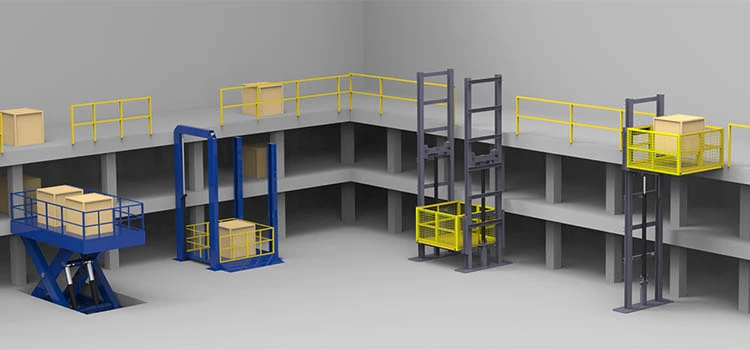London Lift Company: Relied On Experts for All Your Upright Transportation Demands
London Lift Company: Relied On Experts for All Your Upright Transportation Demands
Blog Article
Looking Into the World of Elevators: Typical Concerns Faced by Various Lift Devices
As we navigate through the upright transport systems of modern structures, elevators stand out as a crucial element of our day-to-day lives. From hydraulic elevators to traction systems and machine-room-less styles, each lift type comes with its set of common concerns.
Hydraulic Elevators
Hydraulic elevators, frequently preferred for low-rise structures, make use of fluid pressure to regulate the activity of the elevator auto (lift repair companies). This device includes a hydraulic pump pressing oil into a cyndrical tube, creating the lift to relocate the desired direction. While hydraulic elevators are known for their peaceful and smooth operation, they do come with their very own set of common problems
One common problem with hydraulic lifts is oil leakage. Additionally, problems with the control system, such as defective shutoffs or a malfunctioning pump, can create disturbances in the lift's activity.
Normal maintenance and timely repairs are important to make certain the smooth performance of hydraulic lifts. By attending to these typical problems proactively, structure owners can lessen downtime and ensure the safety and security and performance of their upright transportation system.
Traction Elevators
When taking into consideration vertical transportation systems in buildings, one more common type besides hydraulic elevators is the traction lift. Grip lifts operate making use of a system of ropes and weights that relocate the lift auto by grasping onto the hoist ropes. This mechanism enables smoother and faster upright transportation contrasted to hydraulic systems.
Among the typical problems encountered by grip lifts is rope wear. The constant motion of the ropes within the traction system can bring about tear and put on in time, potentially creating the elevator to malfunction or become hazardous for use. Routine inspections and upkeep of the ropes are important to ensure the lift's proper functioning and security.
An additional concern that traction lifts might experience is connected to the control system. Problems with the control system can cause issues such as unpredictable movement, delays in reaction times, and even complete shutdowns. Normal testing and maintenance of the control system are important to stop such problems and make sure the elevator's dependability.
Machine-Room-Less (MRL) Elevators

One of the essential components of MRL elevators is the compact gearless traction equipment that is installed within the hoistway. This maker successfully drives the lift auto without the requirement for large equipment discovered in conventional grip elevators. Furthermore, MRL lifts normally make use of a counterweight system to stabilize the vehicle, additional boosting their energy effectiveness.
In spite of their benefits, MRL lifts might encounter difficulties associated with upkeep and repair service due to the restricted space for equipment installation. Availability for servicing components within the shaft can be restricted, calling for specialized training for professionals. Proper upkeep schedules image source and routine assessments are essential to guarantee the ongoing smooth operation of MRL lifts.
Overloading and Weight Limit Issues
Straining and weight limit problems are critical issues in lift procedures. Lift suppliers layout raises with specific weight capacities to ensure passenger safety and devices long life.
When elevators are overwhelmed, it places excessive strain on the electric motor, cords, and various other elements, possibly creating breakdowns or failures. Safety mechanisms such as sensors and overload sensing units are in location to stop lifts from relocating if they discover excess weight. Additionally, surpassing weight limits can bring about enhanced power intake and deterioration on the lift system.
To minimize straining concerns, building managers ought to prominently show weight limitations in lifts and enlighten occupants on the significance of sticking to these constraints - lift repair companies. Regular upkeep checks by certified professionals can also assist make certain that elevators are running within secure weight parameters. By addressing overloading and weight limit concerns proactively, structure proprietors can boost lift security and performance
Electrical System Failures
Going beyond weight limitations in lifts can not just lead to mechanical concerns yet likewise possibly add to electrical system failures within the lift facilities. Electric system failings are a vital this link problem in lift operation, as they can cause unanticipated closures, malfunctions, or also security threats.
Regular upkeep and evaluations are vital to determine and resolve possible electric issues quickly, guaranteeing the efficient and secure operation of lift systems. By adhering to weight restrictions and carrying out routine electrical system checks, structure proprietors can reduce the danger of electrical failures in elevators.
Conclusion

Hydraulic lifts, commonly favored for low-rise buildings, utilize fluid stress to control the activity of the lift auto.When considering vertical transport systems in buildings, one more typical type aside from hydraulic lifts is the traction elevator. Traction lifts operate utilizing a system of ropes and counterweights that relocate the lift auto by clutching onto the hoist ropes. Unlike standard elevators that call for a separate maker area to house the equipment, MRL lifts integrate many of the components within the shaft, getting rid of the need for a dedicated pop over to this web-site maker room.In verdict, lifts deal with usual problems such as hydraulic malfunctions, grip system failings, and electric system issues.
Report this page